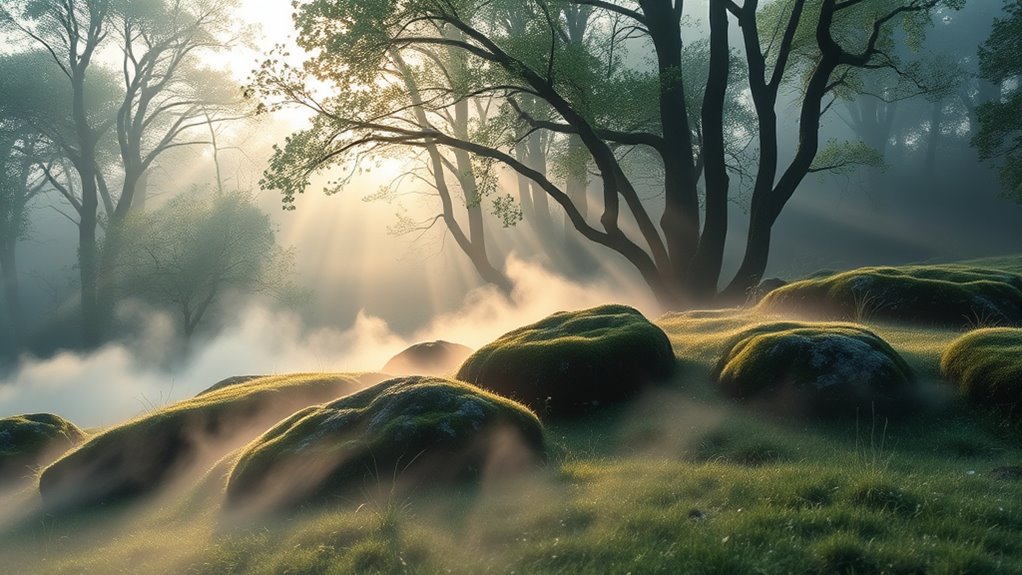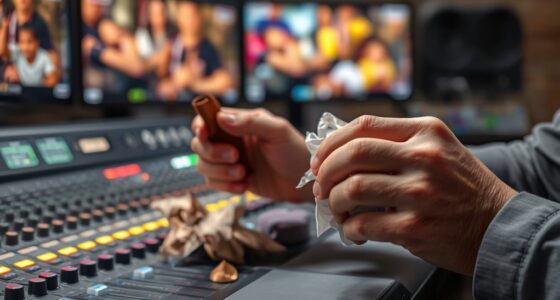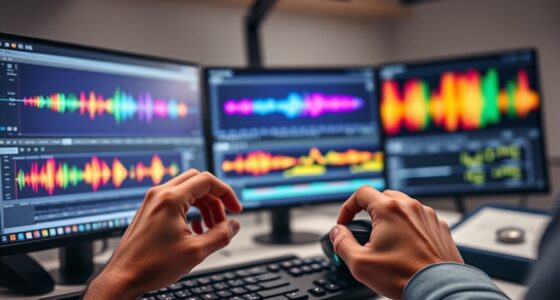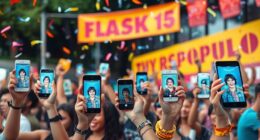You can create atmospheric fog without a fog machine by using household items like dry ice with warm water to produce low-lying mist, or mix water with glycerin or dish soap to prolong fog effects. Misting with a spray bottle or humidifier can also generate gentle fog, especially when combined with fans and dim lighting. Managing humidity and airflow enhances realism. Keep exploring for more tips to perfect your fog effects naturally and creatively.
Key Takeaways
- Use dry ice in warm water to produce dense, low-lying fog mimicking commercial fog effects.
- Employ misting with a spray bottle or humidifier to create fine, atmospheric fog without specialized equipment.
- Incorporate glycerin or dish soap into water to extend fog duration and keep it close to the ground.
- Manage humidity levels with humidifiers and control airflow to enhance fog formation and dispersion.
- Combine natural fog methods with strategic lighting for a more immersive atmospheric effect.
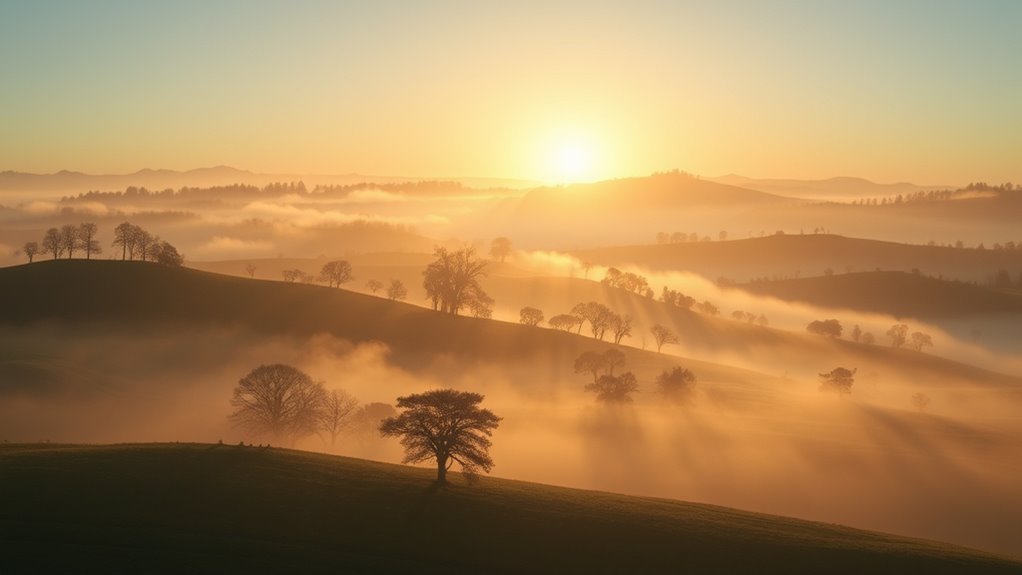
Creating atmospheric fog without a fog machine is entirely possible using simple household items and natural techniques. One of the most effective methods involves using dry ice, which produces dense, low-lying fog that mimics the eerie atmosphere often created by commercial fog machines. To do this, you’ll need to obtain dry ice from a local supplier—be sure to handle it with gloves, as it’s extremely cold. Place small chunks of dry ice in a container filled with warm water, and watch as thick, billowing fog begins to form almost instantly. The cold temperature causes the water vapor in the air to condense, creating a mist that flows and swirls like real fog. For a more controlled effect, you can add a few drops of glycerin or dish soap to the water—it helps the fog linger longer and stay closer to the ground, enhancing the atmospheric effect.
Misting techniques also play an essential role in creating fog without special equipment. If you want a more subtle or widespread fog, you can use a spray bottle filled with warm water or a mixture of water and glycerin. By spraying this mixture into the air, you generate a fine mist that can resemble light fog, especially when combined with dim lighting or backlighting. For best results, spray near a fan or in an area where air movement can help disperse the mist evenly, giving the illusion of drifting fog. You might also experiment with a humidifier set to a low setting—this produces a continuous, gentle mist that can make your space feel misty and mysterious. Additionally, understanding humidity levels can help optimize the fog effect, as higher humidity promotes better condensation and mist formation. Using a humidifier can be a convenient way to maintain the necessary moisture for consistent fog creation. According to AI entertainment trends, integrating natural and household methods for creating atmospheric effects aligns with the growing use of innovative AI-driven solutions in media production. Moreover, controlling the airflow in your space can significantly impact how the fog disperses and appears, making your setup more effective.
Frequently Asked Questions
Can Dry Ice Create Realistic Fog Effects Indoors Safely?
Dry ice can create realistic fog effects indoors, but safety is key. When you handle dry ice properly, it produces dense fog that mimics atmospheric fog, thanks to sublimation releasing carbon dioxide gas. To guarantee safety, always use gloves, keep it in well-ventilated areas, and avoid direct contact. With careful use, dry ice can deliver impressive fog density for your indoor scenes without the need for a fog machine.
How Long Does Homemade Fog Last Without Commercial Equipment?
Imagine you’re hosting a spooky party and want fog effects without equipment. Homemade fog longevity varies; typically, it lasts 10-20 minutes before dissipating. Factors like humidity, temperature, and the method you use—such as boiling water with dry ice—affect homemade fog durability. For longer-lasting effects, you might need to refresh the mixture or employ multiple sources. Keep in mind, safety is key when handling dry ice or hot liquids.
Are There Natural Methods to Produce Fog for Photography?
You can create natural fog for photography by capturing misty mornings or early morning dew, which add a dreamy, ethereal quality to your images. To enhance this effect, shoot when the air is cool and humidity is high, such as during dawn. You might also gently spray water or use natural sources like waterfalls and marshes. These methods produce a soft, natural fog without any equipment, perfect for atmospheric photos.
What Are the Safety Precautions for Using Liquid Nitrogen for Fog?
Handling liquid nitrogen requires careful safety guidelines to prevent accidents. Always wear protective gloves, goggles, and a lab coat to avoid frostbite and eye injury. Use it in well-ventilated areas to prevent nitrogen buildup, which can cause suffocation. Never seal containers tightly, as pressure can build dangerously. Follow proper disposal procedures, and never touch or ingest liquid nitrogen. Respect its power, prioritize safety, and stay vigilant to prevent harm while creating fog effects.
Can Household Humidifiers Generate Enough Fog for Events?
Household humidifiers can produce some fog, but their fog density is usually limited and not ideal for large events. They work by adding moisture to the air, creating a misty effect, but this fog often dissipates quickly and lacks the thickness needed for atmospheric visuals. If you need a more substantial fog effect, consider using specialized equipment or alternative methods to achieve the desired ambiance.
Conclusion
Now that you know how to create atmospheric fog without a machine, you can add a haunting touch to your events or photos. Did you know that natural fog can form when air temperatures drop to dew point, creating a mysterious ambiance? By using simple household items and understanding the science behind fog, you can craft stunning effects anytime. So go ahead—bring your own mysterious mist to life and impress everyone with your fog-making skills!
